Definition
Amino acids are the building blocks of polypeptides and proteins and play important roles in metabolic pathway, gene expression, and cell signal transduction regulation. A single organic amino acid molecule contains two functional groups – amine and carboxyl – and a unique side chain. Humans require twenty different amino acids; eleven are synthesized in the body and nine obtained from dietary sources.
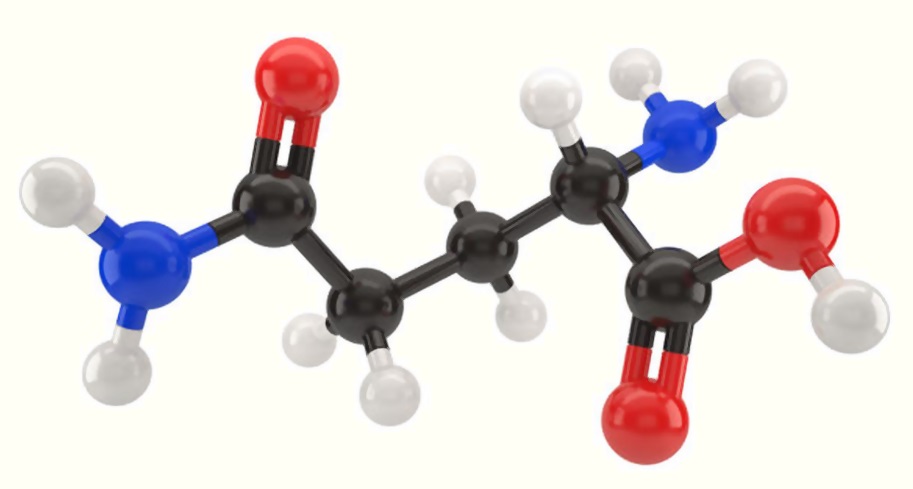
Amino Acids Benefits
Amino acid benefits are simple to name because, without amino acids, we cannot exist. Every anatomical and physiological feature of a living organism is made possible through the existence of amino acids. The synthesis of nutritionally non-essential amino acids in the human body – alanine, arginine, asparagine, aspartic acid, cysteine, glutamic acid, glutamine, glycine, proline, serine, and tyrosine – occurs through the de novo construction of their carbon skeletons. However, recent studies show that we can still benefit from the ingestion of non-essential amino acids to promote optimal health and well-being. Only when quantities of essential amino acids and glucose are sufficient and available can the rate of non-essential amino acid synthesis increase. It is, therefore, important to consume both types of amino acid in the diet in order to benefit from their many positive, if not absolutely essential, effects.
Essential Amino Acid Benefits
The nine essential amino acids are histidine, isoleucine, leucine, lysine, methionine, phenylalanine, threonine, tryptophan, and valine. These amino acids cannot be produced in the body, yet are critical for a staggering range of physiological functions.
Histidine is a precursor to various hormones and metabolites important to kidney function, gastric secretion, the immune system, and neurotransmission. It helps to produce red blood cells and hemoglobin. In addition, histidine catalyzes the action of a large number of enzymes and assists in anti-inflammatory and antioxidant processes. Histidine deficiency leads to anemia, kidney dysfunction, oxidative stress, and inflammatory disorders.
Isoleucine is one of three branched-chain amino acids (BCAAs). It helps to increase the rate of protein synthesis and promotes muscle tissue formation. Additionally, isoleucine is known to enhance glucose consumption, intestinal development, and immune function, although many studies have looked at BCAAs as a whole rather than a single amino acid. This means that leucine and valine – both also essential amino acids – may share these benefits.
Lysine has an important part to play in cell division and growth as it is a major building block of growth factors. Accelerated wound healing using lysine-based solutes leads to less scar tissue formation, while sites that receive little oxygen and nutrients that are directly injected with growth factors benefit from angiogenesis or the development of new blood vessels around the injection site. Furthermore, lysine contributes to fat metabolism. Lysine deficiency can lead to anemia, impaired fatty acid metabolism, slow wound healing, lower muscle mass, and the production of defective connective tissues; however, high levels can create neurological disturbances.
Methionine contains the element sulfur which is essential to cartilage and liver health and ameliorates hair structure and nail strength. Rare metabolic disorders can prevent the body from using methionine which can, in the long term, lead to severe liver damage through oxidative damage.
Phenylalanine is a precursor of tyrosine hydroxylase, an enzyme that speeds up catecholamine synthesis and so affects mood. Phenylalanine is also necessary for the signaling of glucose availability and glucagon and insulin secretion. It plays a further role in fat oxidation. Lack of phenylalanine is associated with confusion, lack of energy, memory loss, and depression. Doses of above 5,000 mg per day are toxic and may cause nerve damage.
The availability of threonine increases the uptake of other amino acids such as phenylalanine but also contributes to neurotransmitter balance in the brain, muscle tissue production, and immune system function. It has been found that babies fed by mothers taking threonine supplements had higher levels of brain glycine with subsequent risk of neurotransmitter dysfunction. As with many amino acids, the correct levels of supplementation are not yet a fixed entity and much more research still needs to be done.
Tryptophan is a precursor molecule of niacin (vitamin B3), melatonin and serotonin and thus essential for sleep and mood. As with all amino acids, the tryptophan codon is a building block for polypeptide chains and proteins. Lack of tryptophan is often experienced as an inability to sleep and a depressive mood.

Non-Essential Amino Acid Benefits
Benefits of non-essential amino acids produced by the body (de novo) are likewise as broad as those of the essential group. While these amino acids are produced from scratch, dietary sources can increase availability and so provide a more reliable and consistent effect.
Alanine and glutamine molecules are synthesized in skeletal muscle using sources of pyruvate and released to increase energy supplies. Both are important for a healthy nervous system and alanine is necessary for tryptophan synthesis. Higher levels of alanine protect the cardiovascular system, while low levels of glutamine increase mortality in critical patients and contribute to significant muscle mass loss. It is also known that glutamine is an important source of energy to tumor cells, second only to glucose.
Arginine is categorized as a conditionally essential amino acid in newborns and a non-essential amino acid in the rest of the human population. Arginine is one of the most common ingredients of polypeptides and proteins and assists to ensure a healthy immune system through increased T-cell production. It helps to release insulin and human growth hormones, neutralize ammonia in the liver, and ameliorate skin and connective tissue quality and healing. It is also found in seminal fluid.
Asparagine plays an important role in glycoprotein synthesis and liver health. Low levels attenuate feelings of fatigue and means this amino acid is often labeled as a pick-me-up. Yet its contribution to central nervous system signaling and development is just as important as its ability to increase energy levels.
Aspartic acid works within the citric acid and urea cycles and is a precursor to other amino acids. What is more, it is also an excitatory brainstem and spinal cord neurotransmitter that increases the chance of successful postsynaptic membrane depolarization. Its inhibitory partner is the amino acid glycine. Both of these non-essential amino acids must be in balance to be of benefit to the central nervous system. Glycine is the simplest amino acid and its calming action improves sleep and reduces reward-seeking behaviors. It can be synthesized through collagen degradation and is the primary ingredient of collagen.
Cysteine, the second and last sulfur-containing amino acid that adds a thiol group (-SH) to the carboxyl and amino groups. Cysteine is synthesized from methionine, the other sulfur-containing but essential amino acid, via transmethylation to produce homocysteine and then via transsulfuration to produce cysteine. Cysteine is used for protein synthesis, coenzyme A synthesis, and glutathione (an antioxidant) and hydrogen sulfide production. It is a precursor of pyruvate and taurine.
Glutamic acid is best known for its role as a precursor to gamma-aminobutyric acid (GABA) where an inhibitory action occurs, although glutamic acid itself acts as an excitatory neurotransmitter all over the central nervous system. This is an extremely common dietary amino acid that may also lower blood pressure levels. Glutamate is sometimes added as a twelfth non-essential amino acid but is a derivative of glutamic acid.
Proline can be synthesized from glutamine or derived from collagen degradation and offers a source of energy when the body is under stress. Proline production can only successfully occur in the presence of the enzyme prolyl hydroxylase and the pro factors oxygen, iron and vitamin C. Proline is also crucial for collagen synthesis. In fact, collagen requires the presence of eighteen different amino acids in varying quantities.
Serine is necessary for the transfer of methyl groups within the body and, therefore, necessary for the production of substances such as creatine, epinephrine, DNA and RNA. It has also been associated with breast cancer cell growth. In another form – D-serine – it plays a neuromodulatory role. Furthermore, without serine, it would not be possible to form glycine, cysteine, taurine, and phospholipids.
Tyrosine has been heavily advertised as a cognitive supplement as it is a precursor of the catecholamines dopamine and noradrenaline, as well as thyroxine and melanin. However, its effects on the general population have not been proved and results tend to occur in some and not others. Tyrosine’s action must, therefore, be dependent upon the availability or absence of other chemicals. As with every amino acid, tyrosine is also an important building block in polypeptide and protein synthesis.
Amino Acid Structure
Amino acid structure is among the simplest of structures to recognize as every organic molecule features an alkaline (or basic) functional amino group (―NH2), an acidic functional carboxyl group (―COOH), and an organic side chain (R chain) unique to each amino acid. In fact, the name of this group is an encapsulation of the central ingredients – alpha-amino [α-amino] and carboxylic acid.
All amino acids contain a single, central carbon atom. The amino and carboxyl functional groups are attached to this central carbon atom, often referred to as the α-carbon. This leaves two of the four carbon bonds free. One will attach to one of the plentiful hydrogen atoms that are in the vicinity, the other will attach to an organic side chain or R-group. R groups possess a variety of shapes, sizes, charges, and reactions that enable amino acids to be grouped according to the chemical properties produced by their side chains. These side chains can be clearly studied in the image below.
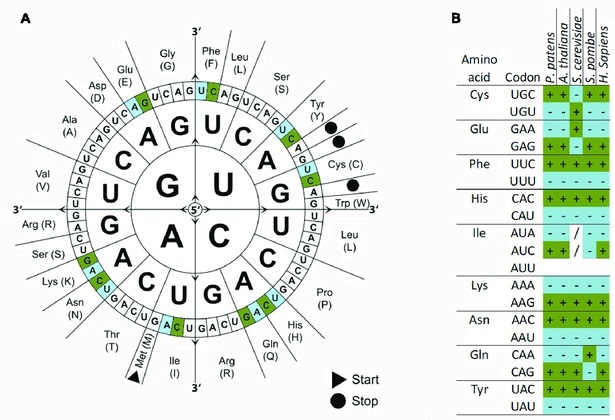
Aliphatic Amino Acids
Aliphatic amino acids are non-polar and hydrophobic. As the numbers of carbon atoms on the side chain increases, hydrophobicity increases. The aliphatic amino acids are alanine, glycine, isoleucine, leucine, proline, and valine; although glycine has so few carbon atoms it is neither hydrophilic nor hydrophobic. Methionine is sometimes called the honorary member of the aliphatic group. Its side chain contains a sulfur atom instead of carbon and hydrogen atoms but, like the aliphatic group, does not react strongly in the presence of other molecules as aliphatic amino acids do not have a positive or negative charge but equal charge distribution across the molecule.
Aromatic Amino Acids
The aromatic amino acids include phenylalanine, tyrosine, and tryptophan and have no to little charge. These molecules vary between hydrophobic (phenylalanine and tryptophan) and not hydrophobic (tyrosine).
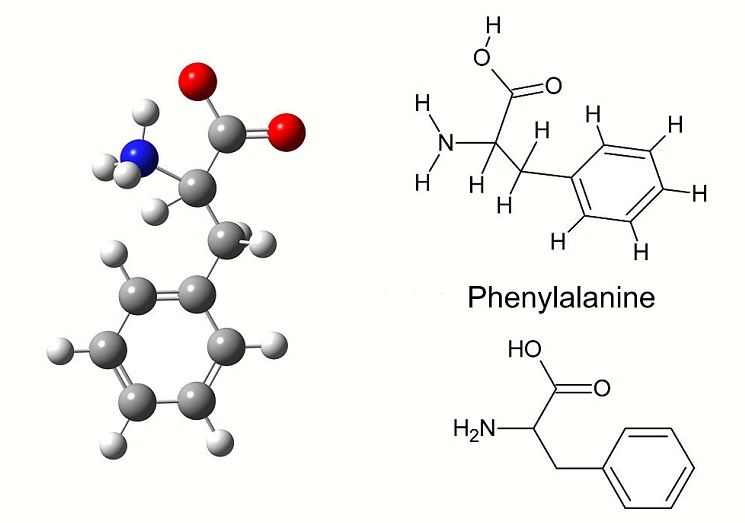
The word aromatic refers to the attachment of a highly stable aromatic ring that does not easily react with other compounds or elements. Otherwise known as aryl compounds, aromatic compounds abound in the human body. Every nucleotide in our DNA and RNA consists of aromatic molecules.
Histidine is sometimes incorrectly listed within the aromatic group. Its amino groups may be aromatic-like but they are reactive with a weak positive charge and hydrophilic characteristics.
Basic Amino Acids
While their name indicates that all amino acids have acidic properties, some have basic (alkaline) side chains that contain nitrogen. These basic R chains bind to available protons (hydrogen molecules) and so gain a positive charge. The amino acids in this group are all hydrophilic.
The three basic amino acids are arginine, lysine, and histidine. Arginine has the strongest positive charge of all amino acids due to three nitrogen groups which is essential to its ability to synthesize proteins and catalyze enzyme function. Lysine also has a strong positive charge, while histidine has a very weak positive charge due to its lack of nitrogen in the amino group.
Acidic Amino Acids
Acidic amino acids are composed of aspartic acid and glutamic acid. Naturally, these are easy to identify due to the word ‘acid’ in the compound name, although sometimes these two amino acids are referred to as aspartate and glutamate which can be confusing. Instead of nitrogen groups, acidic amino acids feature carboxylic acid groups as side chains. As acids, they are able to lose protons in reactions with other compounds or elements and so become negatively charged. Acidic amino acids are hydrophilic
Hydroxylic Amino Acids
Another small group featuring only two amino acids is that of the hydroxylic amino acids represented by serine and threonine. These uncharged polar and hydrophilic molecules have a hydroxyl group as an R chain.
Sulphur-Containing Amino Acids
Only cysteine and methionine contain sulfur atoms and are, therefore, the only members of this group. Cysteine can bond with cysteine by way of a disulfide bridge to form and oxidized dimer called cysteine which is found in large quantities in connective tissue, hair, and finger and toenails.
In sulfur-containing amino acids, the side chain is comprised of a thiol group (-SH). When you notice the letter S in an amino acid chemical structure, you can be sure it is either cysteine or methionine. Cysteine is the smaller of the two molecules and is essentially an alanine molecule with an additional thiol group. Methionine contains a thiol ether with two side groups either side of the sulfur atom that makes it extremely hydrophobic.
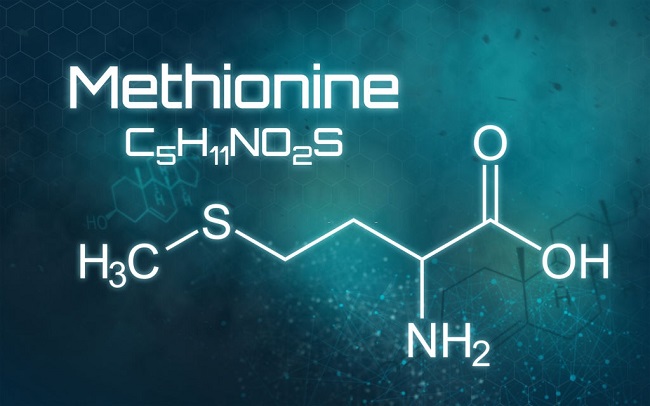
Amidic Amino Acids
The side chain of the amidic amino acids features an amide group (-CONH2) and should not be confused with the amine side group of the amino acids lysine, arginine and histidine.
The amide formed from glutamic acid is called glutamine and the amide formed from aspartic acid is called asparagine. It is, therefore, easy to understand why amidic amino acids are only able to carry out their work in the presence of sufficient glutamic acid and aspartic acid.
Asparagine is a very hydrophilic, non-charged amide of aspartic acid that does not react with other molecules. Glutamine similarly has no charge and is hydrophilic and is an amide of glutamic acid.
Protein and Amino Acids
Protein and amino acids are in essence a dependent relationship. Amino acids are monomers, molecules that bind to other molecules to form polymers. In the case of amino acids, they bind to produce oligopeptides of not more than twenty amino acids or longer polypeptide chains which may then fold to form proteins. Amino acid sequences are based upon an original section of genetic code taken from the DNA.
Protein synthesis occurs within the cell, where sections of the genetic code are copied inside the cell nucleus and transported via messenger RNA to the cell cytoplasm. Messenger RNA (mRNA) is copied once it has been fixed between the large and small parts of a ribosome. This is possible through the action of transfer RNA.
Transfer RNA (tRNA) is attached to an amino acid. An mRNA strand features tens to hundred of codons, each of which features a group of three nucleotides that make up the code for a single amino acid. When transfer RNA recognizes a codon it deposits its attached amino acid within the ribosome where it binds to the previous amino acid to form a chain.
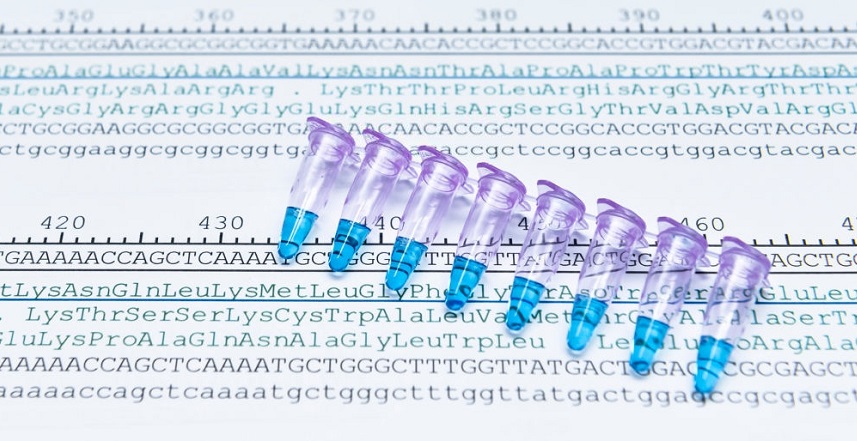
In the above chart, each of the non-essential amino acids is coded by a number of codons. For example, the code that tells the tRNA to bring serine has six different forms – UCU, UCC, UCA, UCG, AGU, and AGC.
Various tRNA bring their deliveries of amino acids in turn and according to each codon featured on the strand of messenger RNA. The result is a growing oligopeptide or polypeptide chain built according to a specific amino acid sequence that matches the instructions of the code copied from the nuclear DNA. Once complete, the chain is released from the ribosome and matures into a functional peptide or protein, according to its length and form.
Protein structures can be primary, secondary, tertiary or quaternary according to the level of folding which occurs. Primary structure merely consists of peptide bonds produced while between the two parts of the ribosome. Secondary structure refers to hydrogen bonds that produce sections of spirals that condense the original chain structure. The tertiary structure adds salt bridges, further hydrogen bonds, and disulfide bonds to create an even more condensed package. Finally, the quaternary structure involves two or more polypeptide chains that will operate as a single unit or multimer. These four structures are simply represented in the below image.

Amino Acids Function
Amino acids function in a multitude of ways. Recent years have shown that amino acids are not only building blocks and cell signaling molecules but also gene expression and protein phosphorylation cascade regulators. We also know they are precursors for hormones and nitrogenous substances and have unprecedented biological importance. In addition, some amino acids regulate key metabolic pathways necessary for maintenance, growth, reproduction, and immunity. Even so, elevated levels of amino acids and the results of their synthesis in the form of ammonia and homocysteine can cause neurological disorders, oxidative stress, and cardiovascular disease.
We are still in the infancy of amino acid research and their full range of functions is still largely unknown, as is the ability of amino acids to work as a group or within a complete system. An optimal amino acid balance in the diet is crucial but on the whole, insufficiently understood and so it is impossible to publish solid guidelines. Dietary supplements of functional amino acids arginine, cysteine, glutamine, leucine, proline, and tryptophan have shown to be beneficial for a range of health-related disorders during every life stage from fetal to geriatric populations, intestinal dysfunction, obesity, diabetes, cardiovascular disease, metabolic disorders, and infertility. Furthermore, amino acids are consumed by sports enthusiasts and athletes to increase muscle mass and reduce fat build-up; however, cognitive side effects and kidney damage have been reported in association with amino acid supplementation.
Amino Acids Examples
Amino acids examples can be found throughout this article. It may be more interesting to look at one of the top current amino acid supplements on the market and discuss its positive and adverse effects.
One of the most popular amino acid supplements is a mix of branched-chain amino acids (BCAAs), namely leucine, isoleucine, and valine. It is said that BCAAs stimulate muscle protein synthesis by more than 30%. This is simply not possible. The first reason for this is that there must be a degree of muscle breakdown to release essential amino acids; the rate of new muscle tissue production is dependent upon the rate of degradation of old muscle cells. Secondly, higher dietary sources of a limited group of amino acids will not perform to a high level when other amino acid levels remain normal or low. As research still has a long way to go, any nutritional advice concerning amino acid intake should be taken at face value. Branch chain amino acids are indeed linked to muscle tissue synthesis but every amino acid, essential and non-essential, is in some way linked to the same function. Although muscle protein is in a constant turnover state, values and ratios of available amino acids may not always be optimal. What is more, all amino acids compete for the same carrier molecules. BCAAs use the same carrier system that transports the aromatic amino acids phenylalanine, tyrosine, and tryptophan. Supplement performance is, therefore, also limited to the availability of transportation; supplement saturation can prevent other important amino acids found in normal levels from reaching their target. High levels of BCAAs compete with carrier molecules for aromatic amino acids which are important for neurotransmitter synthesis. The result can affect mood.

It is believed that BCAAs play an important role in intracellular signaling pathways involved in protein synthesis. This has been proven in a multitude of ways but concentrates on a small window. What is known is that BCAA supplements alleviate symptoms associated with liver cirrhosis and chronic renal failure. Other claims have not yet been satisfactorily proven.
One should also consider the fact that diabetics and the obese have naturally high BCAA levels and low alanine levels. Athletes may be interested in hearing that enhanced blood ammonia levels are present after BCAA administration during exercise suggesting that supplementation may ultimately have a negative effect on muscle performance. Another worrying effect has been found in cancer patients where BCAAs feed cancer growth and are used as an energy source by tumors.
Quiz

